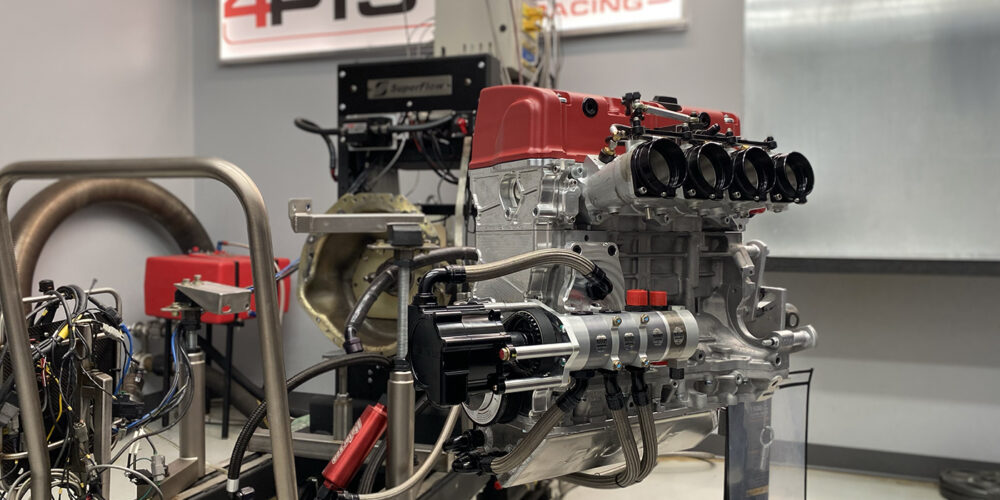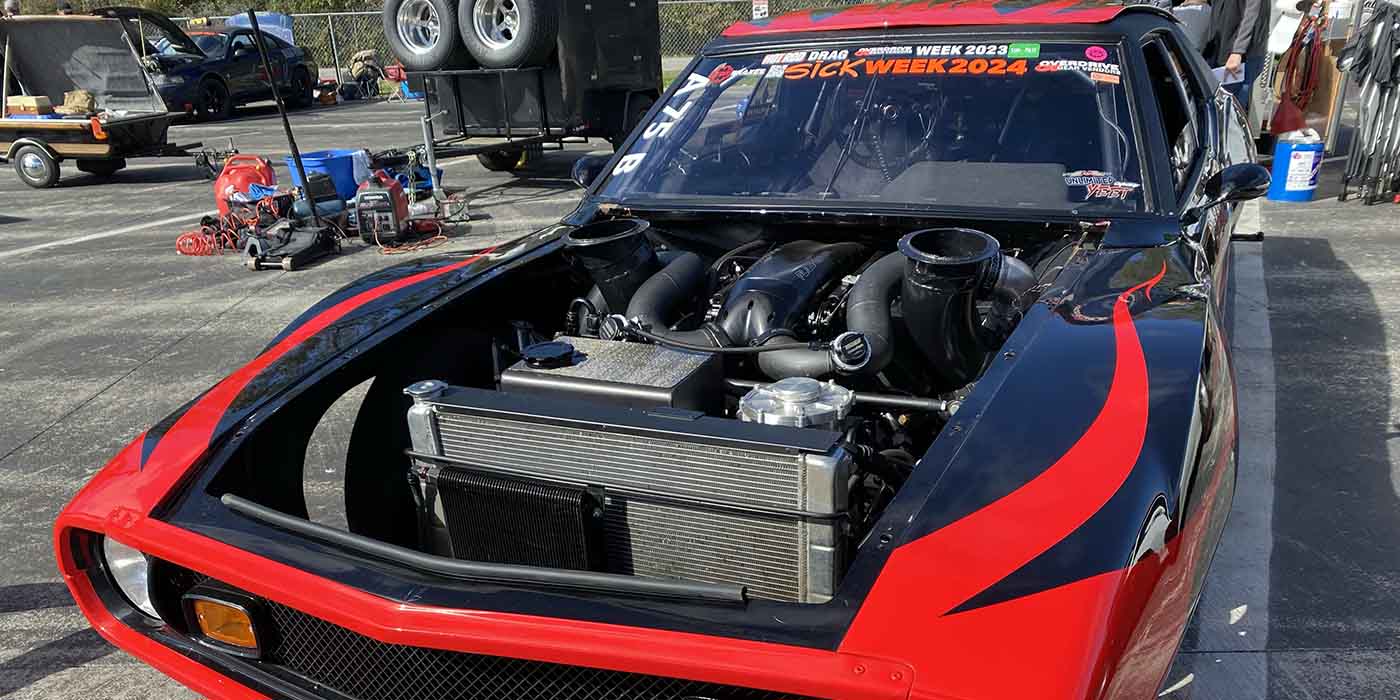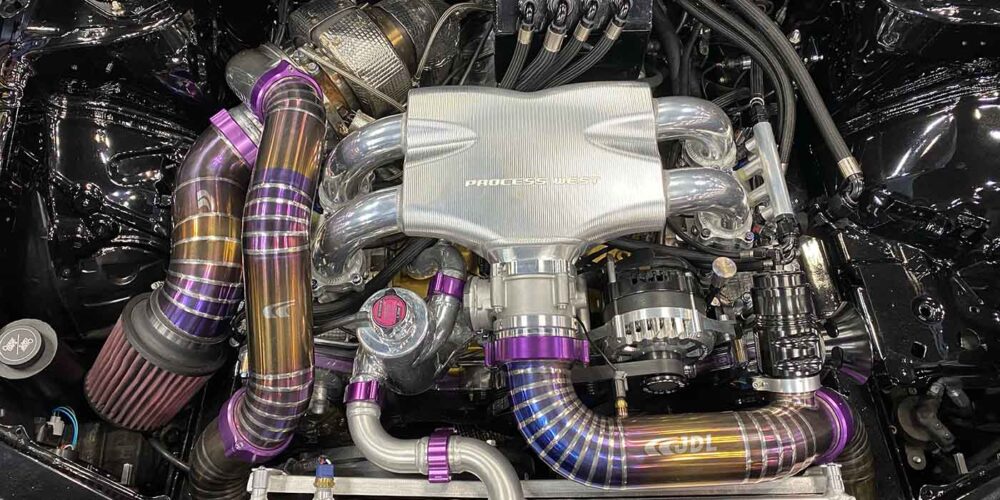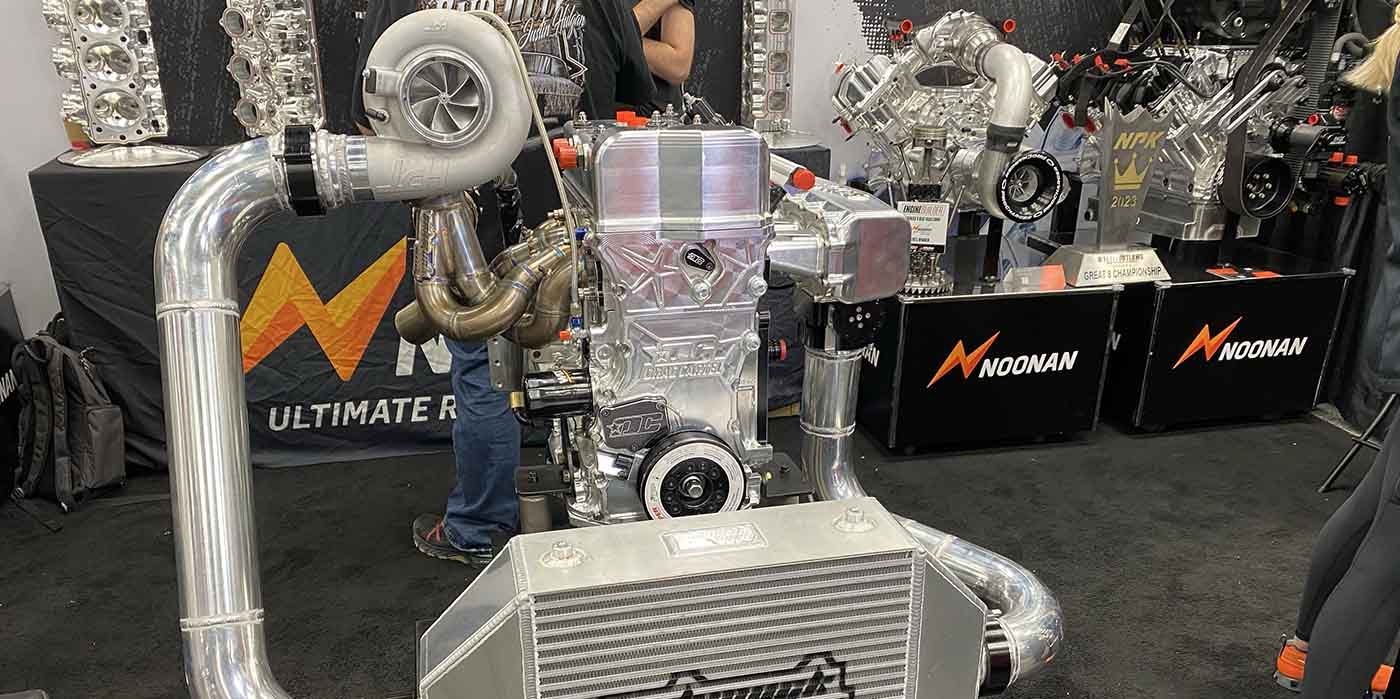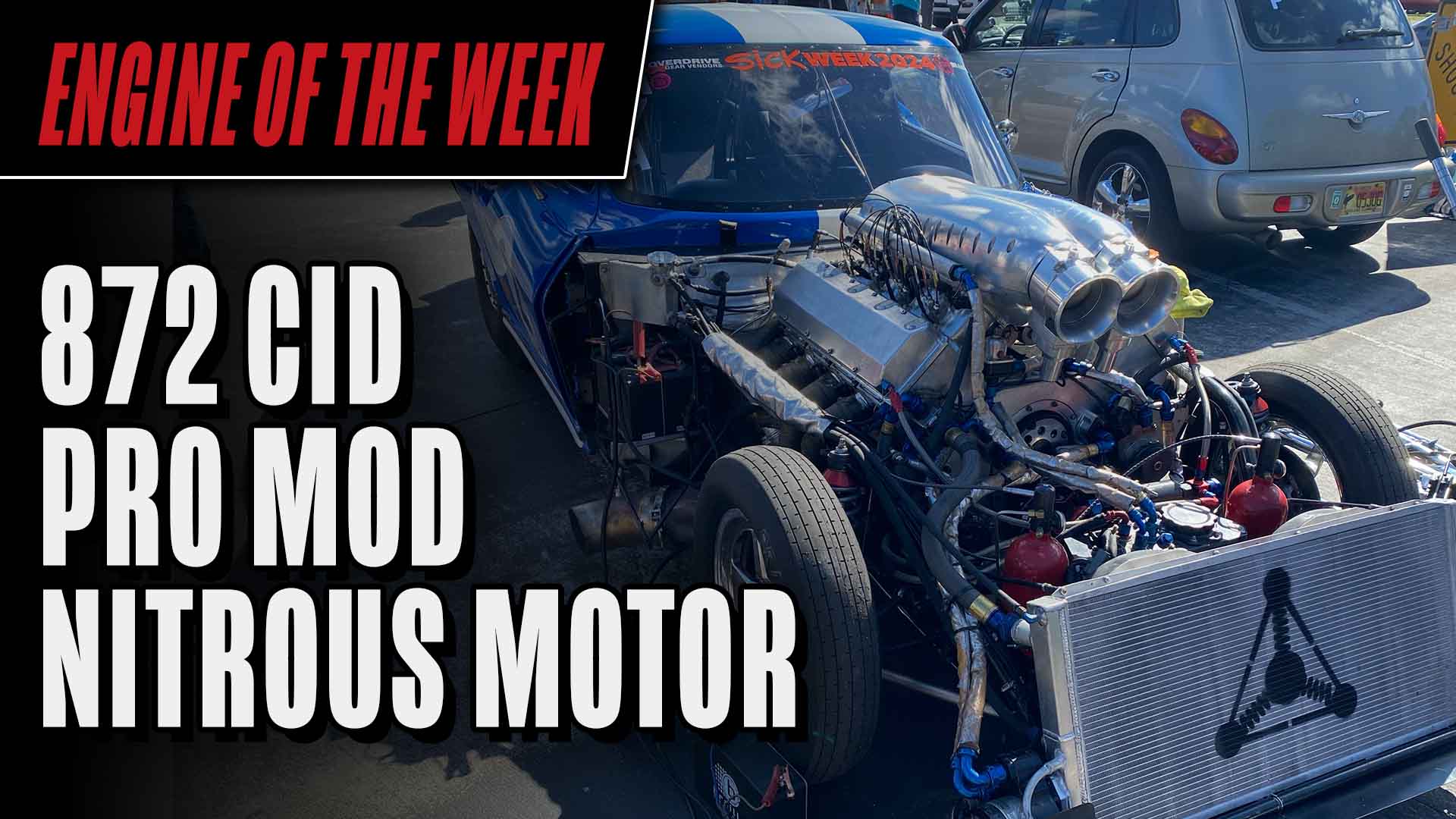Engine of the Week is presented by



Over the years, we’ve built up a great relationship with 4 Piston Racing and co-owner Luke Wilson. Known for being a premier performance Honda engine and machine shop, 4 Piston Racing cranks out some impressive 4-cylinder engine components and full engine builds for a variety of performance applications. More often than not, these engines look clean enough to lick, and trust me, these are tasty builds! Despite having worked with Luke and 4 Piston on several articles in the past, our Engine Builder team hasn’t had the opportunity to visit the Danville, IN-based shop, until this summer, that is.
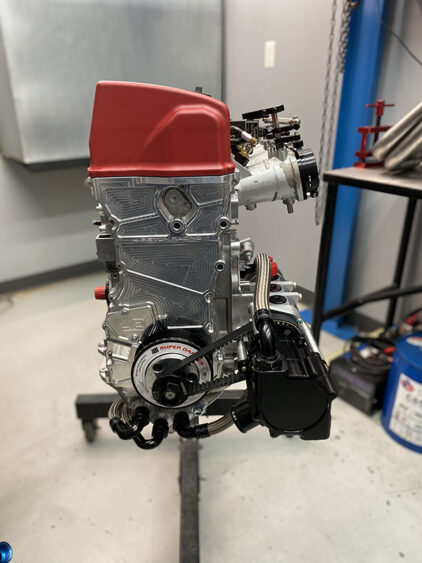
We made the trip to Danville, which is located just 20 minutes from Indianapolis, to film some video specifically with Luke to get to know him better as a person, a businessman and an engine builder for our Vehicle Care Rockstars brand. We also had the opportunity to see a number of engine builds in progress, including this naturally aspirated USAC Midget Honda engine that had just come off the dyno. Luke was happy to run us through the details.
“It’s a very personal project,” Wilson told us. “It’s not something we dove into as something to sell, but it’s more so something I want to do. I grew up watching Midget racing. I still go to the tracks, and I like to spectate, and I have a great deal of respectful for all the engine builders who are doing it with other platforms. Those are all aftermarket blocks and very specific race engine designs.
“It’s a little unique to have a dual cam setup because we have some restrictions like being limited on smaller displacement. This is out of a Honda CR-V. It sounds funny that we have those restrictions being that it’s out of a production car, but these things do produce some power. We’re limited to 154 cubic inches. Those other engines designed from scratch have a very small stroke and a big bore. We’re the opposite – we have a big stroke engine and a small bore arrangement, which presents some challenges for longevity, but the engine produces massive power and they really drive nice.
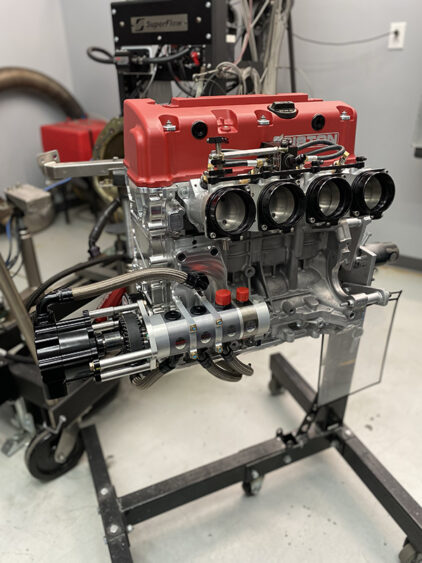
“My interest goes even further in that we have a Midget we’re building just for fun and messing around with. We’re not going to go run national races, but we build some pretty nice race cars, so it may be good enough to put someone in the seat someday. This is an engine package that I’m really personally invested in. I love it.”
As Luke mentioned, the block comes from a Honda CR-V. The only thing 4 Piston does to it outside of its production form is add oilers.
“We do add an oiler to it to keep that thing cool and keep the pin oiled,” he says. “It is a dry sump, so we pull some vacuum, but we’re not too concerned about that in terms of making horsepower. Horsepower is not really an issue. It’s just longevity, drivability and does the racer like it on the pedal. That’s what the key components are.
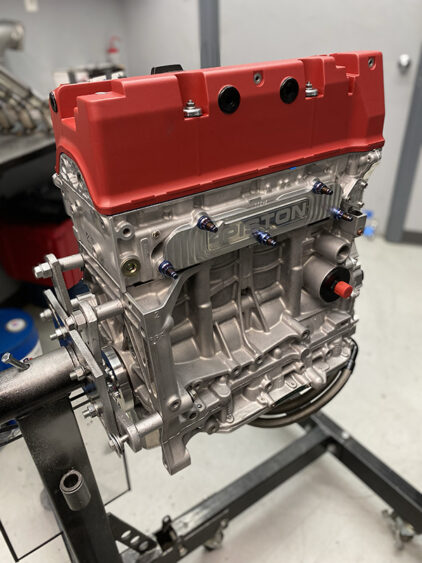
“Inside, it’s a 99mm stroke stock crank from a Honda CR-V and a 90mm bore, so we put big ductile iron sleeves in there. There’s not a lot of room between cylinders because we try to squeeze as much in there as we can. We have a very specific Midget cylinder head because these are direct drive. When they come off yellow to green, they need to get to 2,500 rpm. Well, this is a 9,600-rpm engine. Having a big, broad power band like that is a challenge. We’re not allowed VTEC and VTC, and without modern fuel injection, we have a constant-flow fuel system, so it gets pretty complex. We’ve had to work around the cylinder head and the camshaft to get the vehicle to pull 2,500 rpm off idle.
“You can see that they’re mechanically injected by rules. They have a 40-gpm water pump. We’ve got a lot of pumps driven off one belt, and they’re not all shown on here, but on the end of this is an oil setup and then there’s a power steering pump and a fuel pump.
“It has a Wiseco piston specifically designed for this engine. We don’t have some of the super-fast ECU controllers that we would have on some of our other race stuff, so we’ve got to be able to take a little bit of that detonation. Therefore, you beef everything up. We’ve got a big, DLC-coated pin. We’ve got a beefy Saenz rod. All of that is because of the fuel control and timing control. It’s a high-compression engine at 15:1.
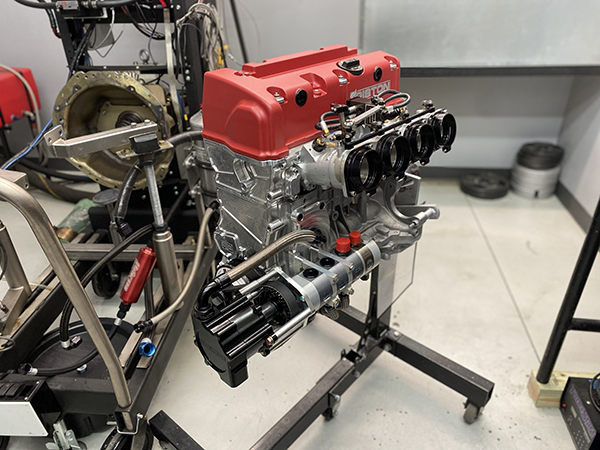
“The cylinder head is a compromise between port size and air speed. We run on methanol, so they make a lot of power – this will exceed 400 horsepower. We’re mandated on peak rpm of 9,600 rpm. We are actually turning a little short of that. We’ll turn 9,300 rpm and it’ll pull all the way through the highest gear.
“We’re using ARP 625 hardware. It’s got a roller rocker. We are still running a steel valve, not a titanium valve. We have good control of the valve, so we don’t have a problem with valve control, which helps us eliminate some cost.”
According to Luke, the total engine package including ignition, fuel – everything – is around $40,000. Other competitive offerings are $50,000 or $65,000 or even $70,000.
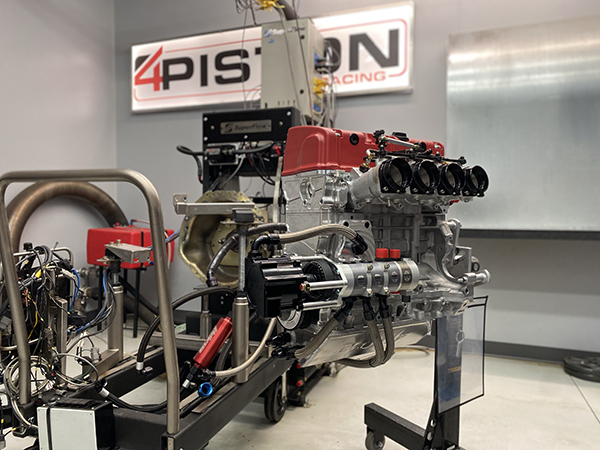
“It’s also very, very lightweight,” Wilson points out. “This weighs a lot less than those other engine builds. It’s only 225-lbs. fully dressed. People will lean these things over at 45-degrees and the intake’s pointing at the ground, which is pretty wild looking. The engine is very powerful and drives very smooth.
“We’ve had excellent feedback. I’ve got a couple teams I’m working with, and they’re allowing us a little bit of freedom, not only with their wallets, but with decisions that we’re making. We’re working through some details and I think we’re going to break the mold a little bit on a couple ideas and hopefully it gets some traction. It’s a challenging engine build for us, but that’s what drives us.”

Engine of the Week is sponsored by PennGrade1, Elring – Das Original and NPW Companies. If you have an engine you’d like to highlight in this series, please email Engine Builder Editor Greg Jones at [email protected].

